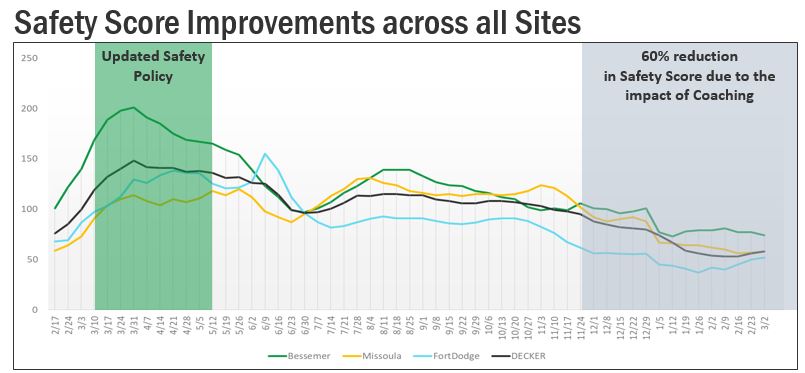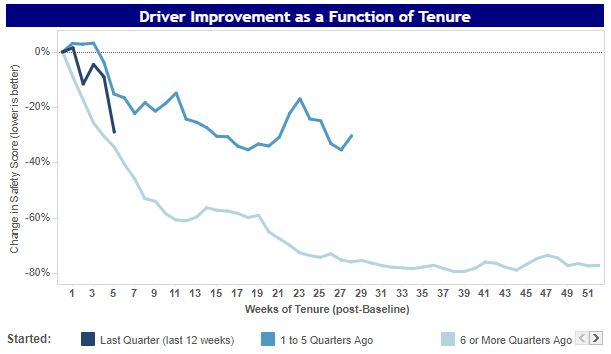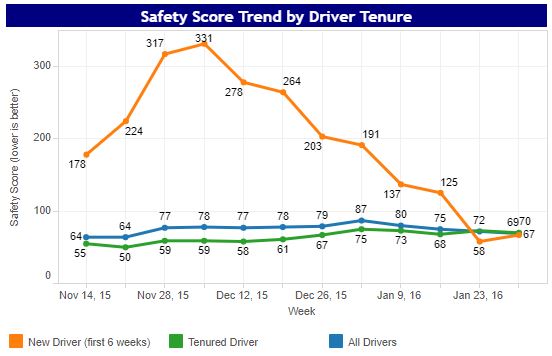
Analyzing Younger Driver Safety in Intrastate Driving
In our last blog post, we examined going beyond mileage-based safety metrics. Continuing our series of diving deeper into ATRI’s top priorities of 2019, this week’s blog post examines safety in younger drivers in light of potential interstate driving.
Due to the driver shortage, fleets are looking for innovative ways to recruit and retain drivers.
In its latest report, ATA states that the trucking industry will need to hire 1.1 million new drivers over the next decade – an average of 110,000 per year to replace retiring drivers and keep up with growth in the economy. The report shows that the median age of for-hire, over-the-road, truckload drivers is 46. That compares to 42 for all U.S. workers, according to Bob Costello, ATA Chief Economist. Other industry segments are even grayer: private carriers have a median age of 57, and less-than-truckload carriers have a median age of 49. This means, according to the ATA study, that retirements will account for 54% of the need for drivers in the years ahead. In addition, the average age for new drivers is 35. As evidenced by one fleet, the change is happening:

The latest talk concerns moving from intrastate to allowing interstate driving for drivers who are 18-21. There is a bill in congress aimed at changing federal law to allow commercial driver’s license holders under the age of 21 to move goods from state to state. The main concern about allowing younger drivers to participate in long-haul driving is safety. All trucks used for training these drivers will have to be equipped with safety technology, including a video event capture system. Why?
Video is the best way to capture poor driving habits and then coach drivers to improve – particularly with younger drivers. If you can change habits early in a driver’s career, it’s less likely they’ll develop bad habits that could lead to a collision. Coaches can easily identify and coach the riskiest drivers and behaviors. The impact of coaching is quickly identified, as shown by one industry-leading fleet:

Younger drivers are used to new technology. They’re quick to adapt to video technology, mobile applications and technological advances that can help improve their safety and, potentially, help them earn a larger paycheck. With a driver app, drivers can now review their videos and self-coach, allowing them to review safety scores, improve performance and create friendly competitions.
As mentioned in the last blog post, analytics is at the core of every driver safety program. And with younger drivers, analytics can help you measure their improvement, know who needs additional coaching and benchmark against more tenured drivers. For instance, SmartDrive SmartIQ can provide a tenured driver analysis so you can see driver improvement as a function of tenure:
 In addition, you can trend Safety Score by driver tenure to see where you need to focus your coaching efforts (see previous blog post for information about Safety Score).
In addition, you can trend Safety Score by driver tenure to see where you need to focus your coaching efforts (see previous blog post for information about Safety Score).

Analytics can help you craft an effective driver incentive program to help reward and retain drivers once they join your fleet. In addition, competitions are always a great way to build camaraderie while also keeping everyone’s eyes focused on safety. Learn more by reading, “Paying for Safety.”
Blog Post Part Three: Revising the ROI of Truck Safety Technologies
- Posted by Melissa.Senoff@smartdrive.net
- On 27 August 2019